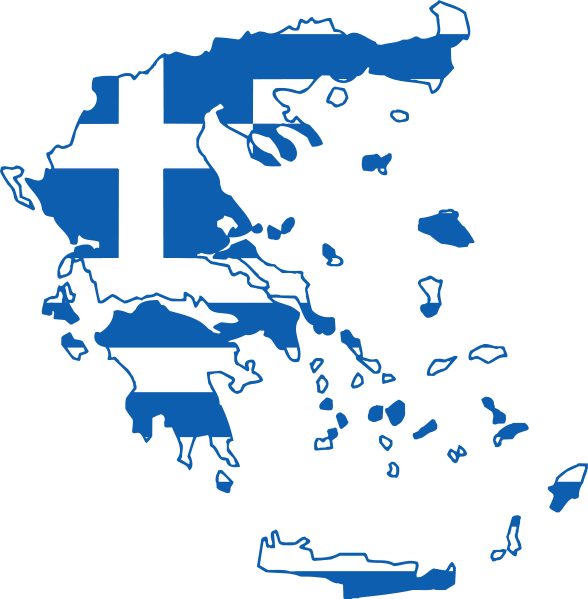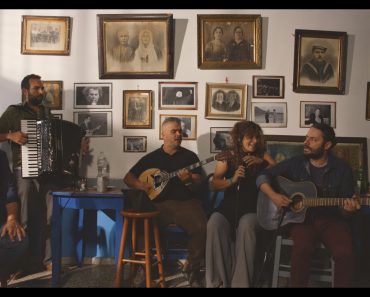In our increasingly high-tech, low-connection society — where “likes” substitute for shared experience, and tweets pass for meaningful commentary — there’s something bracingly authentic about being accosted and challenged by a trio of irreverent goblins. Spontaneous Theatre’s Goblin: Oedipus, which is now onstage at Stratford Festival’s Meighen Forum, provides this experience — and with it a reminder that if we can muster a modicum of attention, the dustiest of theatrical sources and the most unexpected intermediaries can make both the theatrical insights and the good times roll.
Following their wildly successful Goblin: Macbeth,creators Rebecca Northan and Bruce Horak have unleashed thespian goblins Wug, Kragva, and Moog on an even more ambitious target: Sophocles’ seminal tragedy Oedipus the King. Working with Canadian John Murrell’s masterful translation, the goblins excavate the foundations of Western theatre itself, and in the process hold up a cracked mirror to our fractured times. The resulting show probably isn’t the sequel that lovers of Goblin: Macbeth expect — but that’s a feature, not a bug. Compelling and comical, Goblin: Oedipus packs big laughs, incisive insights, and unexpected educational heft.

The goblins first make their presence known outside the Studio Theatre. As showtime draws close, they saunter down the street, then navigate the queuing crowd while making amusingly candid observations and hauling an enormous (well, I won’t spoil that for you). Before the show starts, they pose for selfies and banter with audience members amidst the spare set, which consists of Greek benches and atmospheric clusters of candles. This bright, minimalist atmosphere leaves ample space that the alien energy of the three hosts will soon fill. The disorienting trick on which the Goblin experience depends remains intact and delightfully effective. The goblins’ grotesque and startlingly real masks, their striking voices, and their goblin swagger — this time wrapped in simple Greek tunics — transport us to their reality. We do not see actors playing goblins: we see goblins who are about to do some acting.
Despite Oedipus’ lurid trifecta — patricide! incest! self-mutilation and suicide! — this is no blood-soaked sequel to Goblin: Macbeth. While the goblins earn the show’s 18+ rating with their trademark crass humor and colourful vocabulary, there is a surprising sincerity and earnestness to their approach this time. They briefly remind us of Tolkien’s unfair stereotyping of their kind, and walk us quickly through Goblin 101. But there’s more mischief than menace here … and a palpable sense that these – dare I call them kinder, gentler goblins – are genuinely excited to share their new theatrical passion project with us.
That project is to recreate – and reinvent – the communal experience of ancient Greek theatre with Sophocles’ masterwork. Most theatregoers will be familiar with the premise of the story of Oedipus. But ask people what actually happens in Sophocles’ play, and they probably have no idea because Greek tragedy is not commonly performed – thanks to modern attention spans, our love of action, and the decentering of the classical canon. So the goblins have much heavier educational lifting to do than they did with Macbeth, where they could piggyback on decades of forced Grade 10 study of the play.
Kragva, Wug and Moog lean into this work with gusto. Kragva conscripts twelve audience members to serve as the requisite chorus of citizens: first outfitting them in masks and red robes, then by turns teaching, prodding, and cajoling them to play their role. Under their tutelage, the anonymized twelve become an always-funny, increasingly well-synched symphony that defines and enacts the citizenry’s high-pitched collective emotional response. While hilarious, their choreography of spontaneous shared reaction (yes, it’s an oxymoron!) forms a communal backbeat that feels like an object lesson for our fractured times.
In between the inevitable goblin observations and asides, Wug makes a compelling Oedipus: prowling the stage with the aid of two canes in an off-kilter dance that embodies the character’s desperate circling of the unbearable truth. Meanwhile, Kragva not only wrangles the chorus, but deftly handles every other role but one — with dexterity, profanity, inexplicable accent shifts, and knowing winks to the audience. And finally, Moog plays one pivotal but small acting role, and, as the evening’s musical director, creates soundscapes that alternately enable and comically shatter the ambience.
Ultimately, the goblins succeed in making this cornerstone of Western drama accessible, while giving us a steady diet of observations, insights and surfaced subtexts to laugh about — without dumbing down or disrespecting the source material. And through hilarious exchanges, we learn not just about the role of the chorus, but about Greek theatre’s origins as an act of worship, and what commonly preceded the show (hard to do at Stratford in 2025, though the goblins are keen to try!). We also experience the aesthetic of Greek tragedy: its long discursive speeches and the deliberate offstage occurrence of violent acts, in order to activate the imagination (“not like that Roman garbage,” in Wug’s words).

And yet… at the exact same time, the goblins inject modern counter-narratives to spice up their Greek original. Certain of Moog’s musical choices are deliciously disruptive — for instance, in detective-like and courtroom-like sequences in the original play. And Moog has an endearing, crowd-pleasing weakness for an especially un-Goblin type of story, which he can’t help but inject, like bubbles, into the bloodstream of this ancient, elemental shocker. Likewise, in a deliberate concession to our meme-addled visual culture, Wug at one point violates the rules of Greek tragedy by transforming the static chorus into dynamic flashback actors who re-enact a critical and bloody incident from Oedipus’ past.
So ultimately, the goblins set up shop squarely in the liminal space between ancient and modern, performer and spectator, goblin and human, venerated text and improvisational interpretation. And what emerges from their generative, creative and restorative work is more profound than parody or educational theatre — or simple titillation that Kragva slyly suggests represents “the birth of your modern Internet”. In this age where authentic community experiences feel rare, these three unlikely guides argue for — and succeed — in teaching and then reconstituting some of the original power of Greek tragedy. They prove its ability to bring a community together to face the hardest truths about being human – in this case, the perils of our certainties. And they offer a shared catharsis that helps us understand ourselves and the fragile balance of the world.
And of course, they do it all while making us howl with laughter, and even dragging us to our feet to dance. These kinder, gentler impish interlopers prove that sometimes we need agents of chaos to help us rediscover our most essentially human truths. And that real connection, like real theatre, needs only willing hearts, open minds, shared space … and a dash of goblin mischief.
Spontaneous Theatre’s Goblin: Oedipus is on stage at the Stratford Festival’s Studio Theatre until November 1, 2025. Reserve tickets at stratfordfestival.ca.
© Scott Sneddon, Sesaya Arts Magazine 2025






